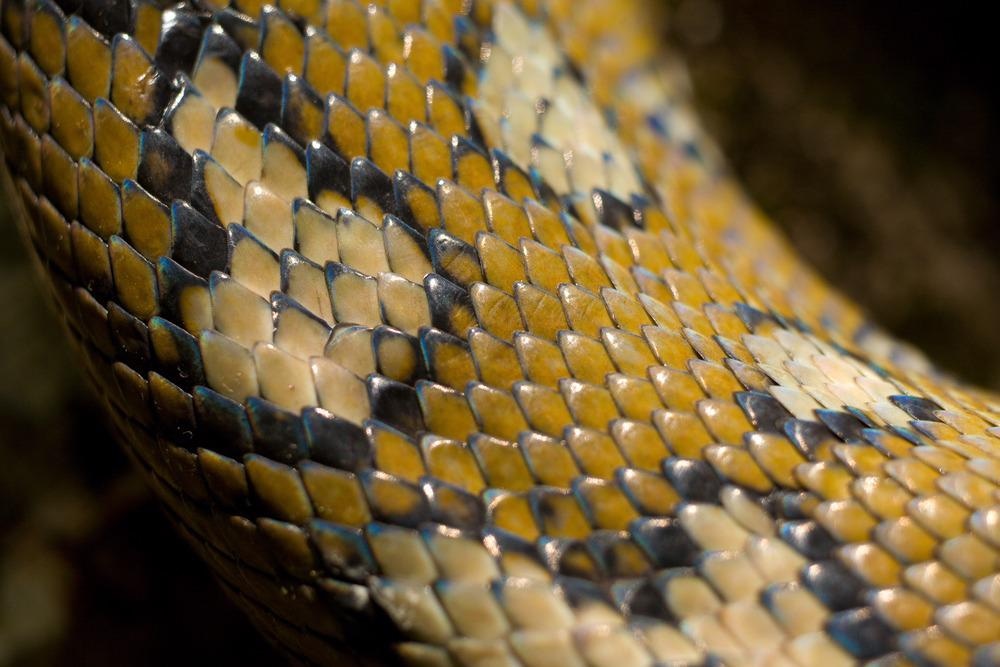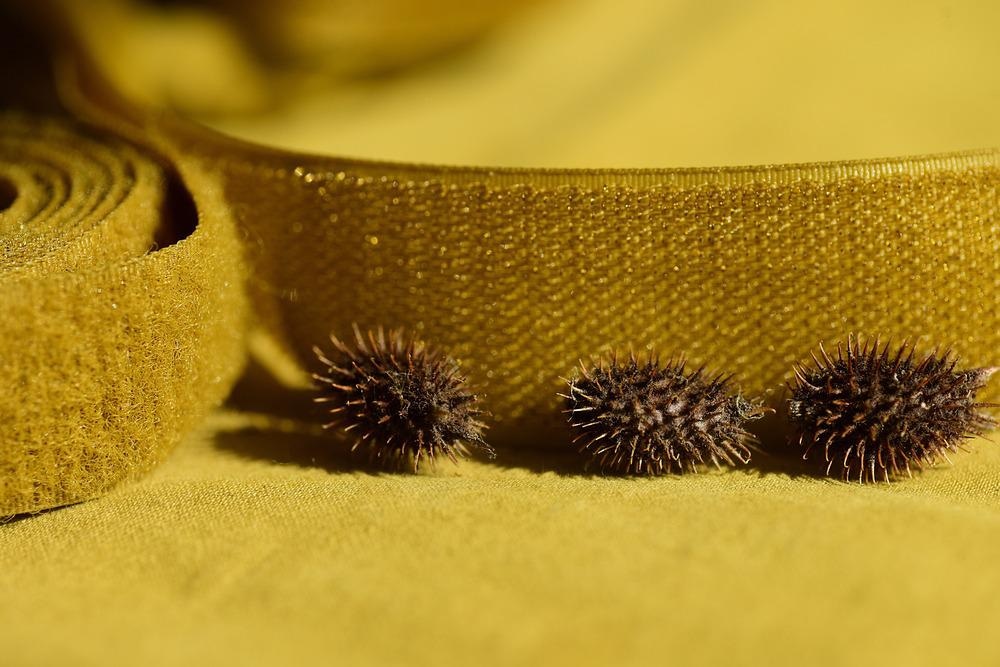Biomimicry, which means the imitation of the living, seeks to learn from natural selection and apply those principles to human engineering, putting nature’s lessons into practice using technology. A snake-skin-inspired battery design has far-reaching implications for wearable electronics.

Image Credit: Janelle Lugge/Shutterstock.com
Nature is an experienced engineer; it has had millions of years to understand what works best for us and what does not.
After 3.8 billion years of existence, only the most functional biological features have survived.
In the words of Janine Benyus, co-founder of the biomimicry institute, biomimicry considers nature to be a mentor, a measure, and a model.
It observes, assesses, and values nature and also uses ecological standards to judge whether certain human innovations are right or not. It studies the models of nature and uses them to solve human problems.
Wearable Technology and Energy Storage Capacity
Wearable technology comprising soft robotics is a rapidly booming field of research.
The assistive soft wearable robotic (SWR) devices have been advancing at an exponential rate and have branched into numerous categories such as robot-facilitated therapy, mobility-assistance achieving activities of daily living (ADLs), human augmentation, etc.
Wearable sensors are widely used in clinical settings to obtain real-time physiological information about the human body.
These devices require energy to carry out their functions, which could be derived from batteries, solar cells, radio frequency (RF) energy harvesters, etc.
Recently, scientists have documented that untethered and dynamically deformable soft robots can be used in wearable electronics and other human-friendly technologies.
They mentioned that one of the major challenges in soft robotics is designing viable energy storage devices, especially if they are required to perform time-consuming tasks.
This challenge could be circumvented if high energy density storage devices with strong mechanical properties could be built into the robots.
Another big challenge of soft robotics is stretchable, portable power sources for actuation.
A New Energy Source for Wearable Electronics and Soft Robots
Scientists at the Korea Institute of Machinery and Materials have developed a novel bioinspired battery design mimicking snakeskin.
The novelty lies in the fact that the design uses origami- and kirigami-based mechanical metamaterials and shape morphing.
The battery houses overlapping scale-like units, which are highly flexible and stretchable, ensuring high energy density while resisting damage.
The overlapping scale-like structure ensures that the unit can bend and morph with the device into which it is integrated.
The scale-like batteries require additional electrochemical stability within the individual cells to ensure safety from external shocks.

Image Credit: Gorodenkoff/Shutterstock.com
Cyclic mechanical loading was used to measure the electrochemical characteristics of the battery.
Rigorous testing revealed that the lithium battery could maintain its performance when deformed and when subjected to 90% stretching.
The initial results were quite promising, and researchers opined that this technology could significantly extend the operating times of untethered soft robots.
Owing to their unique capabilities, the battery could well be used in wearable soft robots, such as those extensively used in the rehabilitation of elderly patients or multi-functional soft robots with artificial muscles.
The initial results are quite promising, and future research will aid in improving the design to augment the storage capacity.
Advantages of the Newly Developed Energy Source for Wearable Electronics
The successful implementation of the stretchable battery to various shapes and movements allows its incorporation into the dynamic and confined space of the target robot or device.
Additionally, this can also be applied as an energy source for search and rescue robots at disaster scenes.
As stated above, the shape-morphing scale battery design, with a zero Poisson's ratio, is capable of multi-axial deformation without off-axis distortion to the loading axis.
This is because of the shape of the unit cells and the geometric configurations of their interconnections.
This battery possesses large areal capacity and reliability, which extends to extreme environmental conditions that require dynamic stretching and bending deformations.
This snakeskin-inspired battery could be used in various types of flexible energy devices that require high stability.
It could play a vital role in the development of flexible electronics such as human-friendly wearable electronics, soft robotics, and multifunctional stretchable devices.
Biomimicry and Other Technological Advancements
Biomimicry has been further applied in various fields such as medicine, industry, architecture, urban planning, agriculture, management, etc. Some of the applications of biomimicry are discussed below:
Bullet trains: The aerodynamics of the Bullet train developed in Japan was inspired by the shape of the kingfisher’s beak.
Climbing pads: Climbing pads can support human weight while climbing a glass wall. Scientists developed climbing pads by mimicking the biomechanics of gecko feet. Geckos are capable of climbing vertical walls owing to the presence of very tiny hair-like strands on the bottom of their feet called setae.
Velcro: Velcro was developed by George de Mestral in 1941. This development was inspired by the burr he found on himself and his dog. A burr is a seed or a dry fruit that contains hooks or teeth which is used for the dispersion of seeds.

Image Credit: TetiBond/Shutterstock.com
Architecture: An architect named Mick Pearce took inspiration from mounds built by termites to design passive cooling structures in 1990.
He observed that this insect created cooling systems capable of circulating hot and cool air between the mound and outside. Recently, another group of scientists used high-resolution scanning technology and computer simulations to investigate the microscopic structure of the external walls of African termite nests.
They applied the concepts to the development of advanced buildings with improved temperature maintenance systems and air circulation systems.
Airplanes: Airbus engineers took inspiration from shark skins to design advanced Airbus jetliners. They fitted small ‘riblet’ patches to the fuselages and wings, mimicking the effect of sharkskin. The improved surface of the airbus was found to be extremely beneficial for long-range aircraft as the drag-reducing surface is effective during high-speed cruise flights.
Swimming suits: Scientists have also taken inspiration from sandpaper-like shark’s skin to develop swimming suits. This swimsuit was found to be particularly effective for reducing drag as the swimmers move through the water, thus improving their performance.
Conclusion
The new snake-skin-inspired energy storage solutions are an exciting example of the potential nature offers us to learn and advance our own technological developments. By employing biomimicry in their research, scientists may have unlocked many future applications for this technology to be used in soft robotics, wearable electronics and many more devices.
References and Future Readings
Lavars, N. (2021) Scale-inspired battery stretches and bends like a snake. [Online] Available at: https://newatlas.com/energy/flexible-stretch-battery-snake-scale/
Rong, G. et al. (2021) Energy Solutions for Wearable Sensors: A Review. Sensors, 21(11), pp. 3806; https://doi.org/10.3390/s21113806
Thalman, C. and Artemiadis, P. (2020) A review of soft wearable robots that provide active assistance: Trends, common actuation methods, fabrication, and applications. Wearable Technologies. 1, E3. doi:10.1017/wtc.2020.4
YouMatter. (2021). Biomimicry Definition: What Is It, Examples And Areas Of Application. (2020) [Online] Available at: https://youmatter.world/en/definition/definitions-what-is-biomimicry-definition-examples/
Disclaimer: The views expressed here are those of the author expressed in their private capacity and do not necessarily represent the views of AZoM.com Limited T/A AZoNetwork the owner and operator of this website. This disclaimer forms part of the Terms and conditions of use of this website.